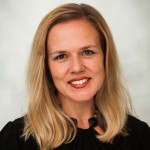As part of current research projects for the Institute, I have interviewed several school leaders in recent weeks. One conversation strand particularly caught my attention. It began with a phone call with Larry Rosenstock, CEO of High Tech High in San Diego, CA. During the call he posited that online learning could eventually evolve into a two-class proposition, wherein the lucky “haves” continue to enjoy premiere education with excellent face-to-face teachers, and the “have-nots,” in poorer communities without quality face-to-face options, take what they can get—a dismal computer lab with cold PCs pushing out low-end content and drills. He wondered aloud if online education might go the way of vocational education and serve students mostly at the bottom.
I then spoke with Mark Kushner, CEO of Flex Public Schools and VP of School Development and Partnerships at K12. Without prompting from me, Mark steered the conversation in the same direction, but took the opposite point of view. Mark marveled at the unique potential online learning has to serve a broad range of students. Like Larry, Mark noted that the economics of online learning make it a natural fit for drop-out recovery and for school turnaround projects in depressed communities. But he then noted that online learning also provides an exceptional hook for kids at the top, who are bored in traditional classes. Their array of learning modalities, access to esoteric courses and entrée with higher level teachers quickly swells as online learning options increase. Mark then considered students in the middle, often lost in a crowded school and undifferentiated from the masses. These students, too, can find a smaller community, customized electives, and a more personalized niche through virtual schoolrooms.
Jan Keating, Head Master of Stanford Online High School, brought further insight to the issue. She mentioned that online learning provides a distinct opportunity to expand options for gifted students. She noted that one of her students secured three patents and a lucrative IP license while attending her school—a feat nearly impossible to layer into a traditional school schedule. The elite 300 students who take the rigorous Stanford online courses do it to liberate themselves from the confines of a traditional model.
What will online learning look like in ten years? Will it be for everyone? I suspect that we will see a range, with certain students best served by a face-to-face teacher for some content, while others learn the same content more quickly through a menu of online tools.


